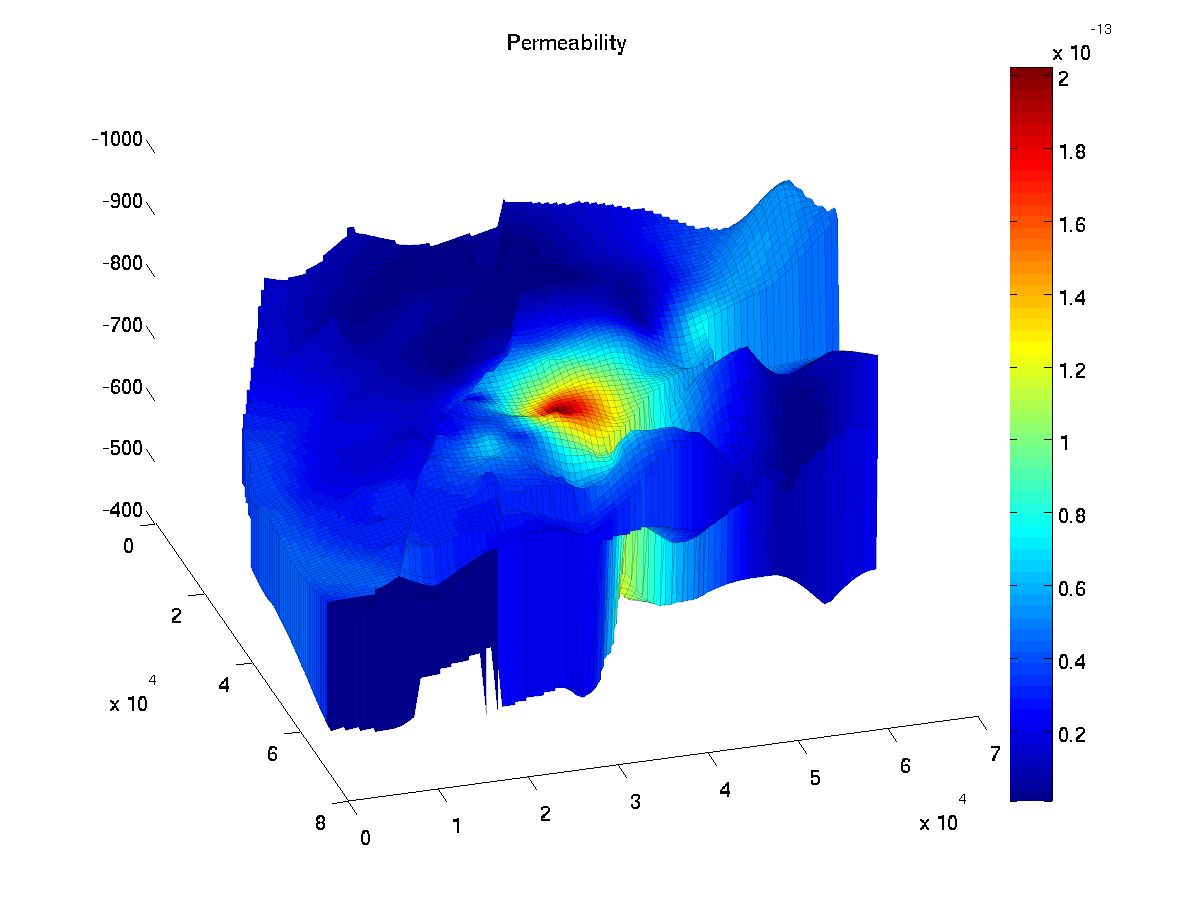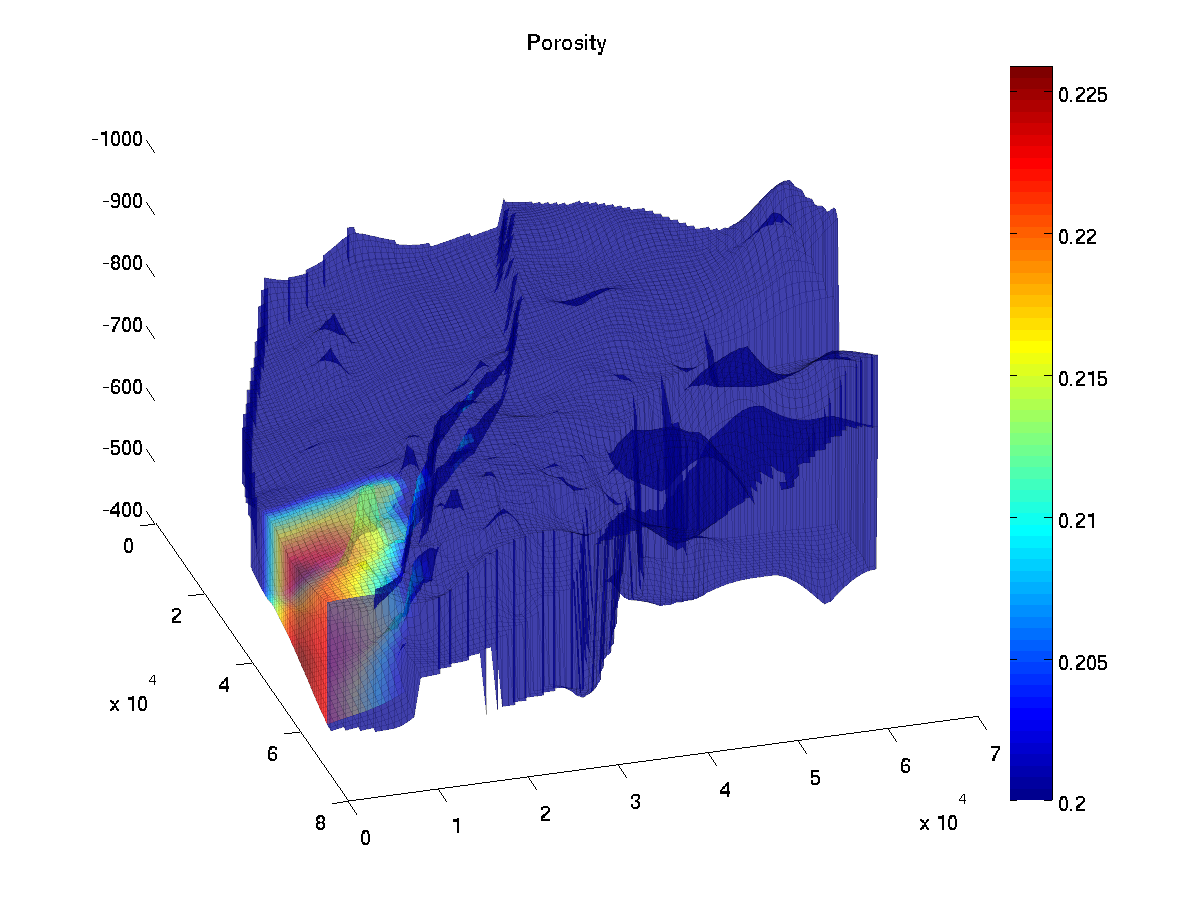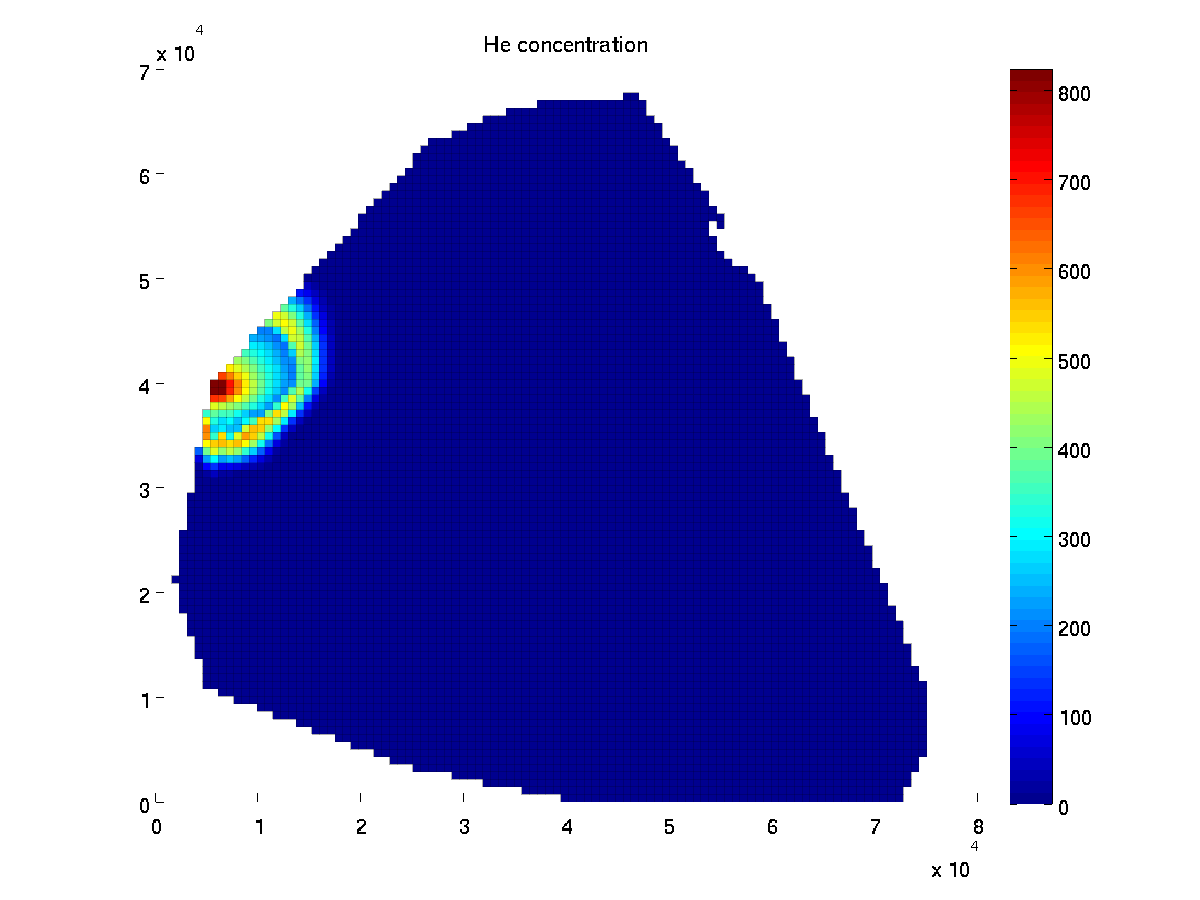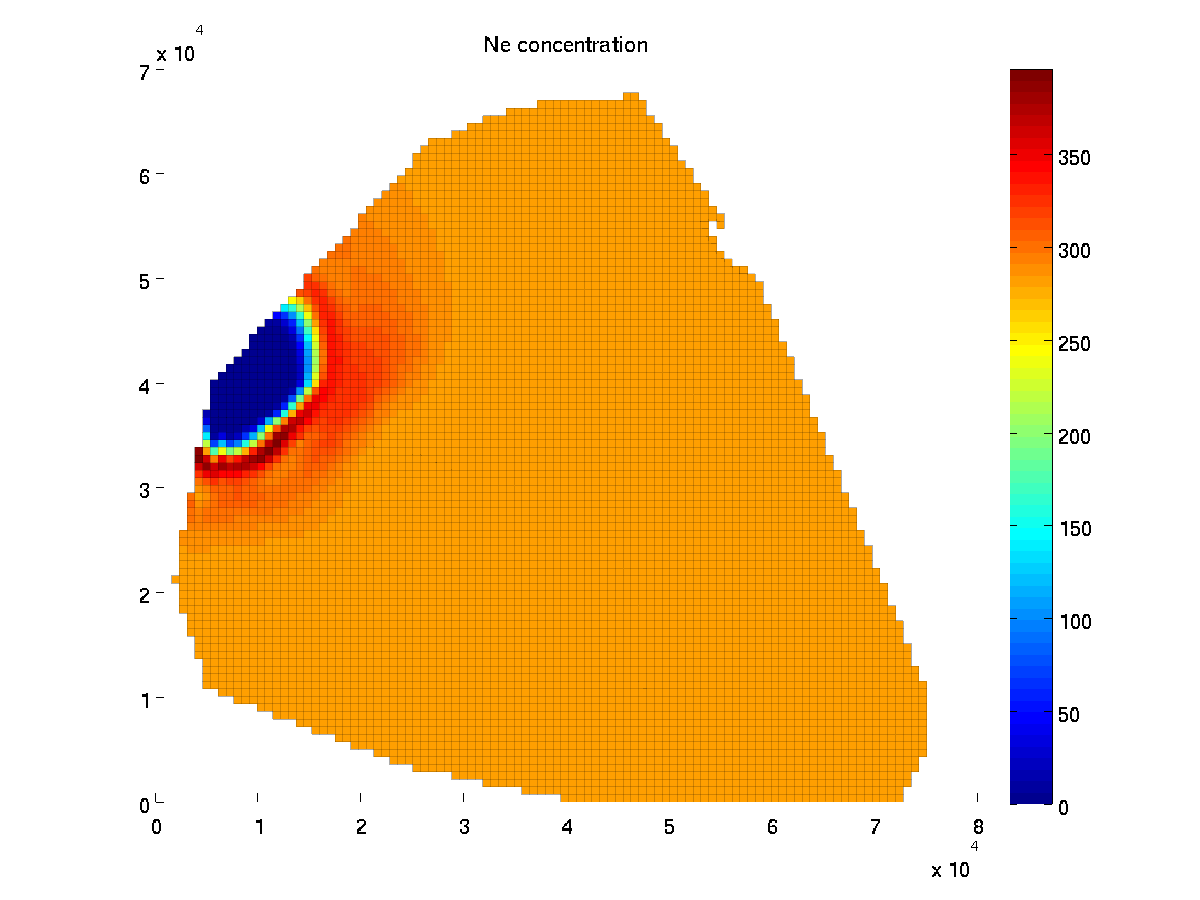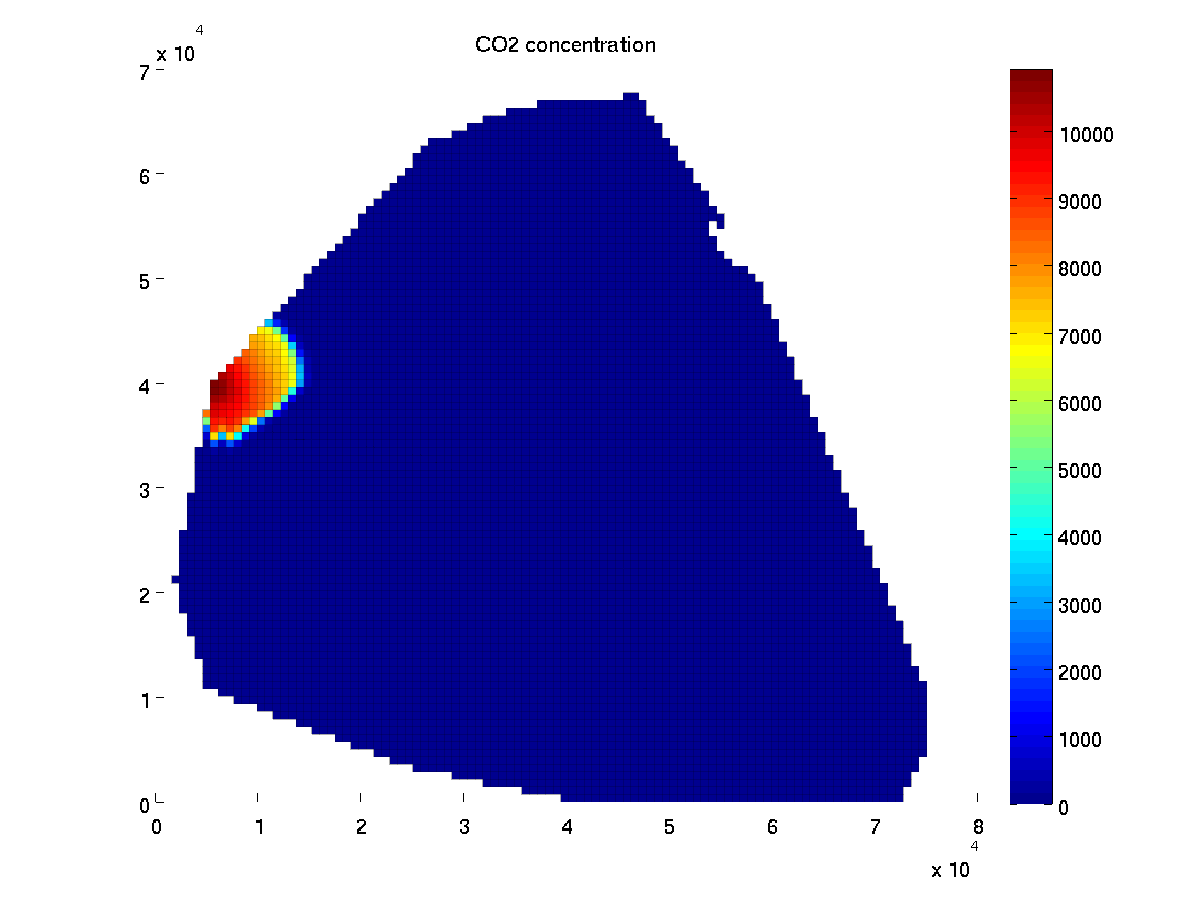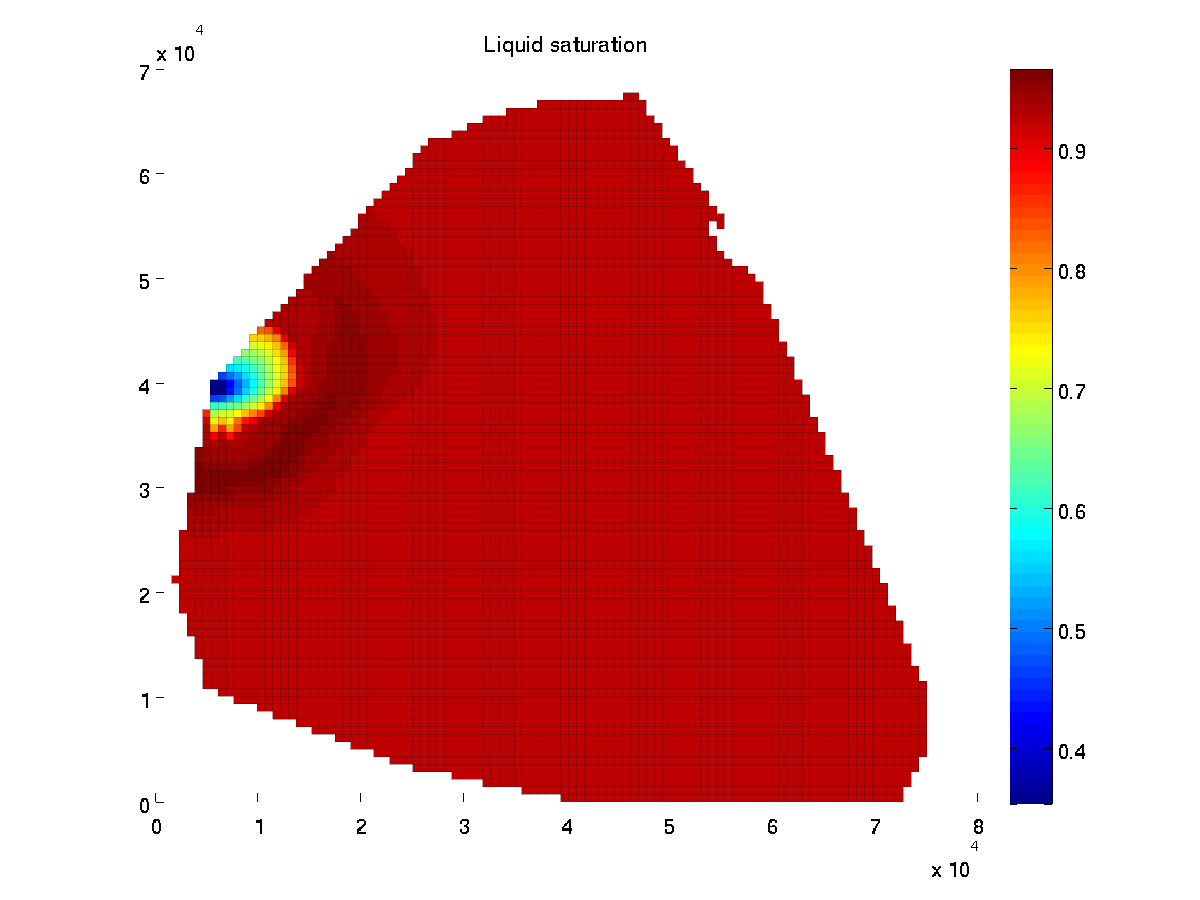|
Bravo Dome tutorial
The Bravo Dome carbon dioxide gas field is located in northeast New Mexico. The Bravo Dome field covers approximately 3200 km^2. Production in 1989 was 3.2e9 cubic meter of gas from 272 wells. Cumulative production at the end of 1989 was 17e9 cubic meter. Estimated recoverable reserves are more than 283e9 cubic meter. The gas is 98-99% CO2. Most CO2 produced from Bravo Dome is used for enhanced oil recovery in the Permian basin. We thank Kiran Sathaye for his help in setting up this tutorial. We consider a compositional system composed of Helium, Neon, Carbon dioxide and Water. We use Henry's law to compute the ratio of each component in the gas and liquid phase. For water, we assume that the water vapor pressure is constant. We refer to the note tutorial bravo note for a description of the model with the assumptions that are used. The grid is constructed from raw data tables consisting of arrays (dimension 100x100) which contains the permeability, the porosity, the depths of the lower and upper layers for a Cartesian grid. See function setupGeometry.m.
Below, we list the files that are needed to set up this compositional solver. In the first list, we have the main functions that have been written for this tutorial. In the list helper functions, we find short functions that could have been included in the main functions but which , for the sake of clarity, have been written as separate functions. At last, we list the functions from MRST (core and ad-fi modules) that are used in this tutorial. We use a fully-implicit in time and two point flux in space discretization. We observe that
Main functions
Helper functions
MRST functions used in this tutorial
Download tutorial filesNumerical resultsInitially, we set the initial molar fractions of neon and water equal to 0.5% and 99.5% respectively, with no helium and carbon dioxyde. The pressure in the whole reservoir is set to the output pressure, that is, 80 bar. We inject a mixture composed of 10% Helium and 90% CO2 at a rate of 1000m^3/day. To compute the injected mole amount, we solve the flash equations assuming an injection pressure of 130 bar. The injection is done on four cells on the western side of the reservoir and the output pressure is set on one face at the most eastern cell, see setupControls.m. The simulation is run for 10000 days with a time step of 200 days. The following plots show the result of the simulation at end time. We observe that, as espected, the helium travels faster than the carbon dioxyde because of its lower solubility in the liquid phase.
|
||||||||||||||||||||||

